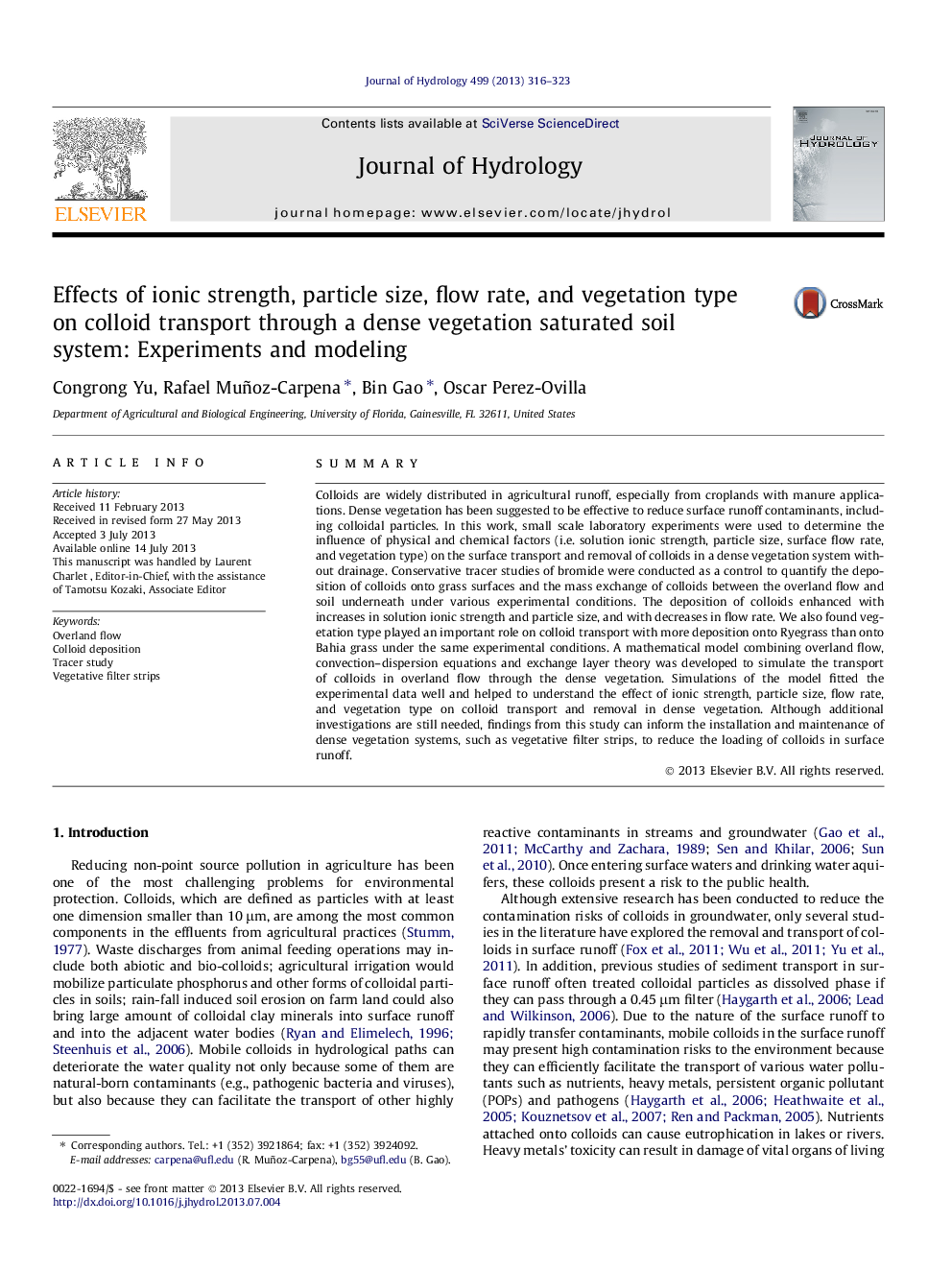| Article ID | Journal | Published Year | Pages | File Type |
|---|---|---|---|---|
| 6413656 | Journal of Hydrology | 2013 | 8 Pages |
â¢Deposition of colloids enhanced with increases in solution ionic strength.â¢Deposition of colloids enhanced with increases in particle size.â¢Deposition of colloids enhanced with decreases in flow rate.â¢Vegetation type played an important role on colloid deposition and transport.â¢Convection-dispersion equation model simulated the experimental data well.
SummaryColloids are widely distributed in agricultural runoff, especially from croplands with manure applications. Dense vegetation has been suggested to be effective to reduce surface runoff contaminants, including colloidal particles. In this work, small scale laboratory experiments were used to determine the influence of physical and chemical factors (i.e. solution ionic strength, particle size, surface flow rate, and vegetation type) on the surface transport and removal of colloids in a dense vegetation system without drainage. Conservative tracer studies of bromide were conducted as a control to quantify the deposition of colloids onto grass surfaces and the mass exchange of colloids between the overland flow and soil underneath under various experimental conditions. The deposition of colloids enhanced with increases in solution ionic strength and particle size, and with decreases in flow rate. We also found vegetation type played an important role on colloid transport with more deposition onto Ryegrass than onto Bahia grass under the same experimental conditions. A mathematical model combining overland flow, convection-dispersion equations and exchange layer theory was developed to simulate the transport of colloids in overland flow through the dense vegetation. Simulations of the model fitted the experimental data well and helped to understand the effect of ionic strength, particle size, flow rate, and vegetation type on colloid transport and removal in dense vegetation. Although additional investigations are still needed, findings from this study can inform the installation and maintenance of dense vegetation systems, such as vegetative filter strips, to reduce the loading of colloids in surface runoff.
